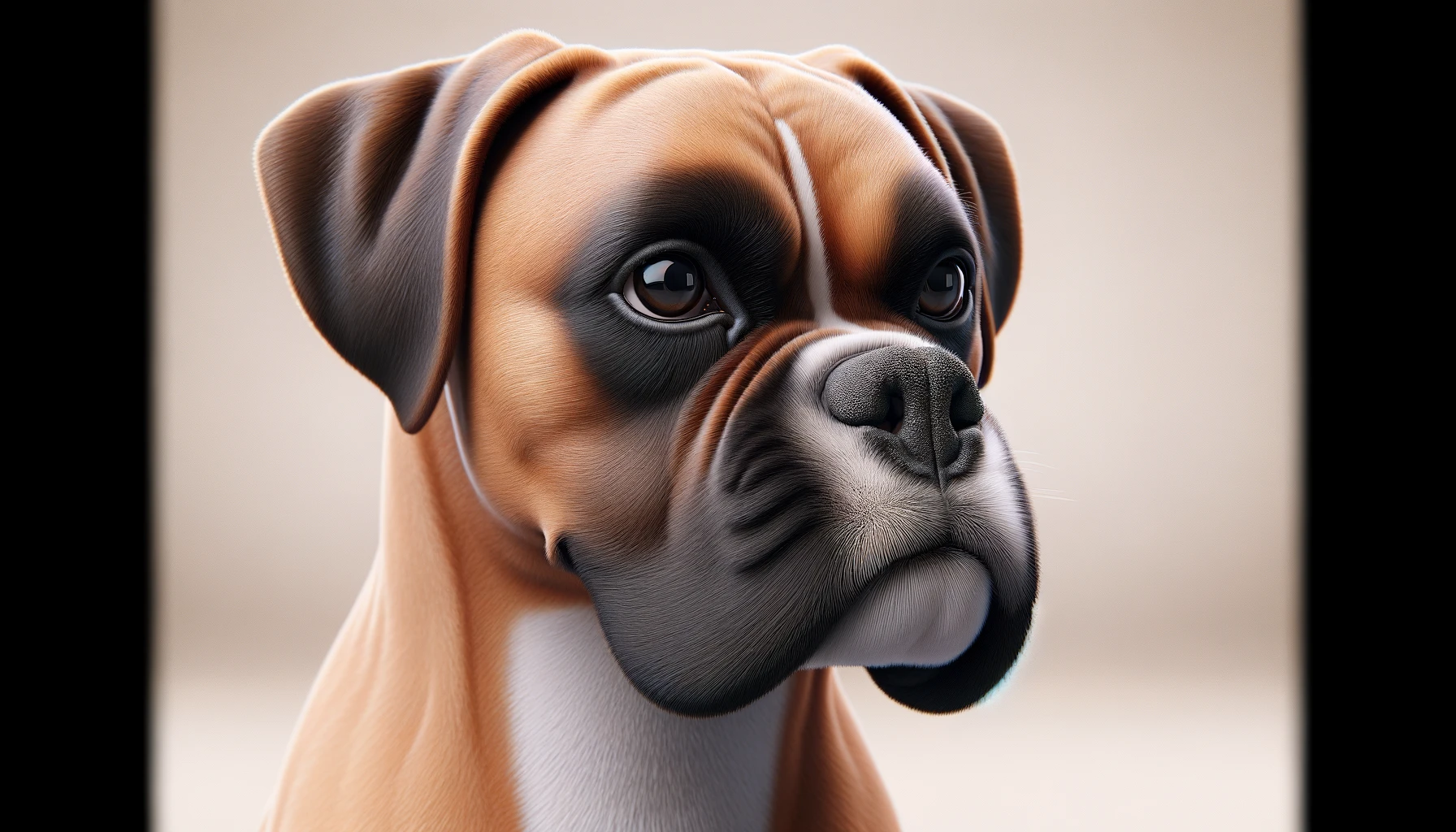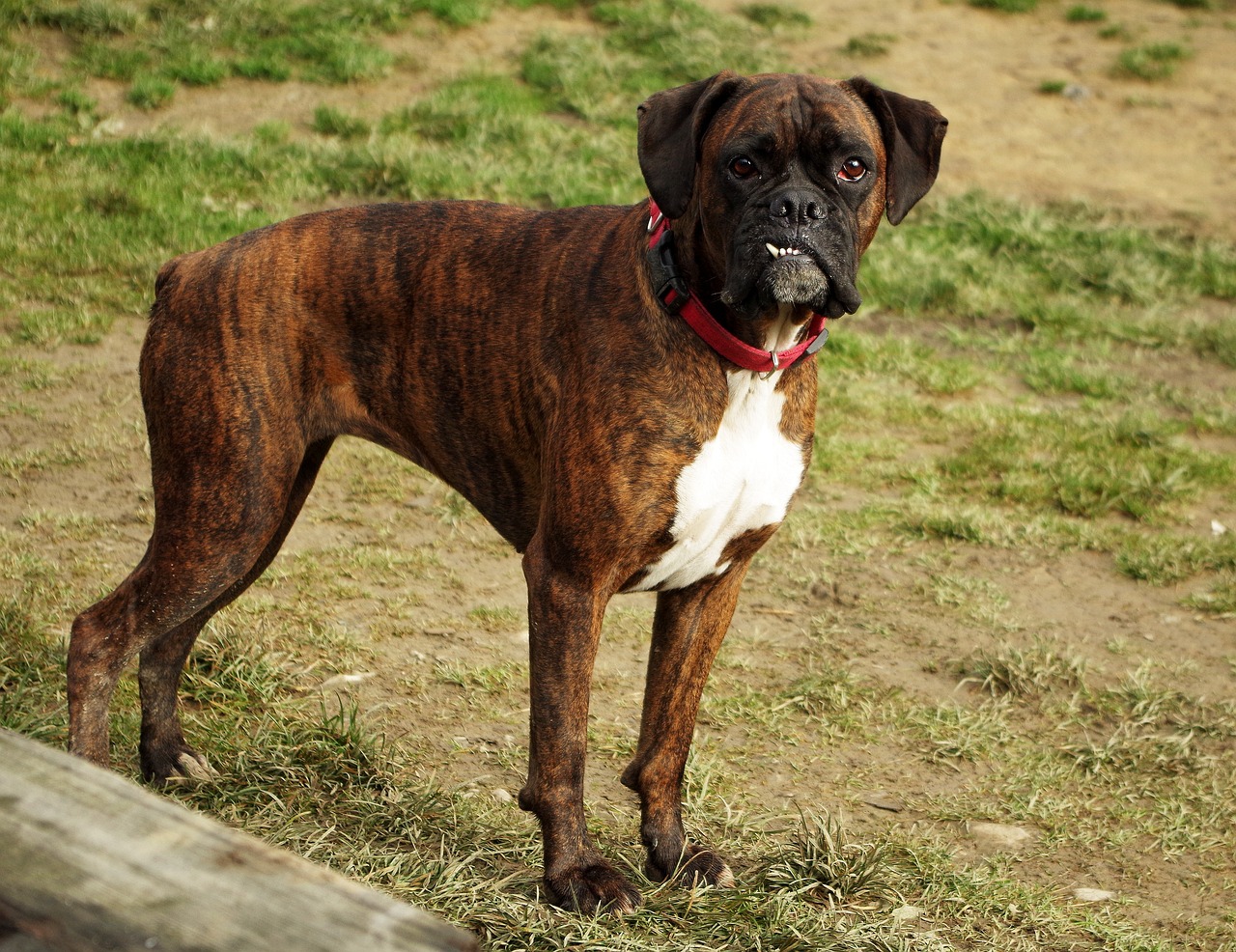Boxers are a beloved breed known for their playful demeanor and strong loyalty. A medium to large breed, Boxers are athletic and energetic, and make excellent family pets. One of the unique aspects of Boxers is their coat, which comes in a variety of stunning colors. While some colors are commonly seen, others are rare and highly prized. These colors not only contribute to the breed’s physical appeal but also add to the distinctiveness of each dog. In this article, we will explore seven different color variations of Boxers, showcasing the diversity and beauty of the breed. From the classic fawn to the rare white, each color variation has its charm and set of characteristics that can influence a prospective owner’s choice.
1. Fawn

Fawn is perhaps the most classic and recognized color in Boxers. This color can range from a light tan to a deep, rich mahogany. The intensity of the color can vary depending on the dog’s genetics, with some exhibiting a very light coat while others display a dark, almost red shade of fawn. Fawn Boxers often have a black mask around the muzzle, which accentuates their expressive, dark eyes. This color showcases the muscular build of the Boxer very effectively, highlighting their strong shoulders and powerful legs. Many show breeders prefer the darker shades of fawn because they make the Boxer’s white markings, if any, appear more striking.
2. Brindle

Brindle Boxers feature a beautiful pattern of dark stripes on a fawn or tan background. The stripes can vary from light, sparse, and subtle to dark, thick, and dramatic, known as “reverse” or “black” brindle when the stripes are so dense they dominate the fawn background. This striking pattern is unique in that no two brindle Boxers are exactly alike, with each dog having a different pattern. The brindle coloration not only adds a layer of depth to the coat but also makes each dog distinct in appearance. Brindle Boxers are highly valued for their beautiful and unique markings, which often stand out in agility and obedience competitions.
3. White

White Boxers are less common and are often mistaken for albino dogs, but they are not true albinos. They have pigmented skin and colored eyes, unlike albinos. White in Boxers is typically due to a lack of melanin production, which affects their coat but not necessarily their overall health. However, white Boxers are more prone to sunburn and may have increased health risks like deafness. Despite these challenges, white Boxers have a striking appearance, with their pure white coats providing a stark contrast to their dark eyes and noses. They require a bit more care, especially in sunny environments, to protect their sensitive skin.
4. Black

While pure black Boxers are not recognized by major kennel clubs and are quite rare, some Boxers may appear black due to very heavy bridling. These are often referred to as “sealed” brindle because the black stripes are so dense that the fawn background is barely visible. It’s important to note that a true solid black Boxer does not exist; what is often perceived as black is just a very dense distribution of brindle stripes. This variation is striking and sought after for its rarity and the imposing appearance it gives to the muscular build of these dogs.
5. Dark Reverse Brindle

Dark reverse brindle Boxers are a more intense variation of the standard brindle. This coat pattern features a predominance of black coloring with fawn stripes, the opposite of the usual brindle. The effect is a dramatic, dark coat that emphasizes the power and agility of the Boxer’s physique. This color variant is especially popular among those who appreciate a more somber aesthetic but still want a dog with distinctive markings. The dark reverse brindle Boxer stands out in any crowd and is often highlighted in promotional materials for its bold and robust appearance.
6. Red Fawn

Red fawn Boxers are similar to the standard fawn but with a much more vibrant red tone to their coat. This coloring is still paired with the typical black mask that adds a level of intensity to their expression. Red fawns are especially striking under sunlight, as their coat can seem almost aflame. This color variant is not as common as the regular fawn but is highly prized for its beauty and vibrancy. Owners of red fawn Boxers often report that these dogs are head-turners due to their striking coat color.
In conclusion, Boxers come in a variety of colors and patterns, each with its unique beauty and set of considerations. Whether you prefer the classic look of a fawn Boxer or the striking uniqueness of a checkered pattern, there is a color variation to suit every preference. These colors contribute to the breed’s popularity and make each Boxer unique, allowing owners to enjoy not only the loyal and affectionate nature of their pets but also their distinctive physical appeal.
Frequently Asked Questions About Boxer Colors
1. What are the most common colors for Boxers?
The most common colors for Boxers are fawn and brindle. Fawn ranges from a light tan to a deep mahogany shade, often accompanied by a distinctive black mask on the muzzle, which highlights the expressive eyes and face. Brindle Boxers have a base of fawn, but with dark stripes that provide a unique pattern, which can vary from sparse to dense. These common colors reflect the breed standard recognized by most kennel clubs, making them popular choices among both pet owners and breeders. Each color showcases the muscular physique of the Boxer, adding to their visual appeal and highlighting their dynamic presence.
2. Are white Boxers rare?
White Boxers are less common than fawn or brindle, but they are not exactly rare. Approximately 20-25% of Boxers are born white. However, they are not typically favored in show rings because the standard colorations are fawn and brindle. White Boxers are often a result of genetic inheritance of the extreme piebald gene, which reduces the amount of pigment in the coat. While they are not rare, they require specific care due to increased health risks like sun sensitivity and a higher incidence of deafness.
3. Can Boxers be black?
True black Boxers do not exist. Some Boxers may appear to be black, but these are very dark brindle, also known as “sealed” brindle, where the stripes are so close together that the dog appears to have a black coat. This is caused by an intense concentration of the brindle striping, not by the actual black color. Black is not recognized as a standard color in the breed by any major kennel club and should be understood as a variation of brindle rather than a distinct color.
4. What does a reverse brindle Boxer look like?
A reverse brindle Boxer has a coat where the dark stripes dominate to the extent that the fawn base color looks like the striping. This creates a darker overall appearance, making the Boxer look almost black. The reverse brindle is essentially the opposite of the regular brindle, with more emphasis on the dark markings than on the lighter background. This color pattern highlights the Boxer’s muscular build and energetic demeanor, making it highly valued for its striking aesthetic.
5. How does the color of a Boxer affect its health?
The color of a Boxer does not typically affect its health, except for white Boxers. White Boxers can be prone to sunburn due to their lack of pigmentation, which requires owners to take preventive measures against prolonged sun exposure. Additionally, there is a higher prevalence of deafness among white Boxers, often linked to their genetics. Otherwise, the health of a Boxer is more influenced by genetics, lifestyle, and care rather than coat color.
6. Is it possible for Boxers to have blue eyes?
It is extremely rare and generally not standard for Boxers to have blue eyes. The typical eye color for Boxers is brown, with darker eyes being favored in the show ring. Blue eyes in Boxers can sometimes occur, particularly in white or very light-colored Boxers, but it is often linked to genetic anomalies or health issues such as albinism. Blue eyes are not a recognized trait in the breed standards and are usually a sign of crossbreeding or genetic variation.
7. What is the rarest color for a Boxer?
The rarest color in Boxers is the checkered or piebald pattern, which involves irregular patches of color over a primarily white base. This pattern is not a standard or widely recognized coloration in Boxers and results from specific genetic influences. Due to its rarity and genetic implications, it is less commonly seen and not typically bred intentionally, as it can be associated with the same health risks as white Boxers, such as increased deafness.
8. Can a Boxer’s coat color change as it ages?
A Boxer’s coat color can slightly change as it matures but generally remains consistent once it reaches adulthood. Puppies may have a lighter coat that darkens as they develop, particularly with brindle Boxers where the stripes become more pronounced. However, significant changes in coat color are unusual once the Boxer is fully grown. The most notable changes might be in the intensity or clarity of the brindle patterns rather than a complete color change.
9. Are colored Boxers more expensive than standard colors?
Colored Boxers, particularly those with unique or less common patterns like reverse brindle or checkered, can sometimes be more expensive than the standard fawn or brindle. This is typically due to their rarity and the demand for unique-looking pets. However, price should not be the sole consideration when acquiring a Boxer, as health, temperament, and breeder ethics are far more important factors.
10. What grooming requirements are there for different Boxer colors?
The grooming requirements for Boxers are generally the same across all colors. Boxers have short, smooth coats that require minimal grooming. Regular brushing will help reduce shedding and keep the coat shiny. Bathing should be done as needed but not so frequently as to dry out their skin. Regardless of color, it is important to maintain regular nail trimming, ear cleaning, and dental care to keep any Boxer healthy and comfortable.
 Toledo, United States.
Toledo, United States.